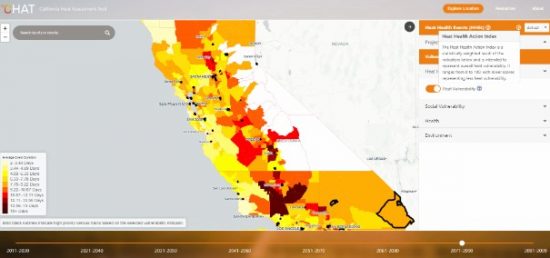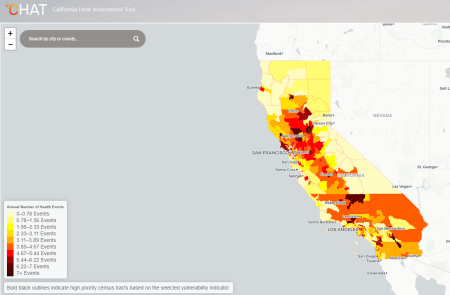November 20, 2018 – When I called a couple of weeks ago to interview Yoon Hui Kim, Director of Advisory Services at California-based Four Twenty Seven, a company that describes itself as a “leading provider of market intelligence on the economic risk of climate change,” I asked her how is it possible to overcome American indifference to taking action on climate change.
Two nights before our conversation the latest mid-term election results illustrated my point. Of seven climate-related initiatives being voted upon, only two passed. One in Florida, described as an environmental amendment, combined bans on indoor vaping with bans on offshore oil and natural gas drilling (a strange combination to say the least). The other, in Nevada, had voters saying yes to requiring public utilities to get 50% of electricity from renewable sources by 2030. The big disappointment of the night was the failure in Washington state to pass the first U.S. attempt to implement a price on carbon pollution outside of cap-and-trade initiatives.
Kim’s answer to my initial question was interesting. Four Twenty Seven, she told me, doesn’t debate the cause of climate change but rather focuses on existing evidence to provide climate vulnerability assessments. Instead of a debate, the company helps the governments and businesses that are its clients to integrate climate change into long-term decision making and policy.
Four Twenty Seven describes itself as a market intelligence firm looking at the climate risk exposure of its clients’ assets. Its efforts are location specific and data-driven. It measures economic and financial risk from climate looking at regional infrastructure, and adaptation funding needs. Kim uses the phrase “investable adaptation methods,” and says the key to the company’s success is in the balance between hard and soft policy, raising client knowledge so that the right questions are asked and answered, and the right decisions can then be made.
I asked Kim to give me some examples of recent work. She pointed to three:
- The California Heat Assessment Tool (CHAT) – a planning tool to help localities in California assess local Heat Health Events (HHE), temperatures and humidity spikes that have public health impacts for local populations. The tool projects the annual number of HHE events, event duration, maximum and minimum temperatures, and maximum and minimum relative humidity in each California census tract. Its audiences are city and community planners, policymakers, public health practitioners, and the general public, and its goal is to help users understand the local impacts of HHEs and plan for the vulnerabilities of specific communities.

- Denver Health and Climate Vulnerability Index – a tool that maps Denver’s vulnerability to extreme heat looking at the interconnectedness of socio-economic and environmental conditions. Indicators include infrastructure that increases or decreases vulnerability. For example, impervious surfaces which contribute to the heat island effect, or tree canopy which mitigates heat vulnerability. Socio-economic indices look at the makeup of neighbourhoods focusing on incidents of heat-related illness cross-linked to household demographics, social isolation, age, educational attainment, and race. The end result is a Heat Vulnerability Score map combining all these measures which the city is using to plan its intervention and climate change adaptation strategies.
- Assessing Exposure to Climate Risk in U.S. Municipalities – a report that provides climate risk scores for 3,142 U.S. counties and 761 cities with a population exceeding 50,000. The dataset incorporates incidents of cyclones and hurricanes, sea level rise, extreme rainfall, heat stress, and water stress. Key findings show that in the east, the mid-Atlantic coastal states and Florida, and the San Francisco Bay area and Pacific Northwest at highest risk to flooding. Cyclone and hurricane risk exposure is greatest along the Gulf and Southern Atlantic Ocean coastlines, with cyclone risk more evident in the mid-Atlantic and Northeastern states. The Midwest is at greatest risk to floods from extreme rainfall events while the highest heat stress scores are across the Great Plains, the Mississippi River basin, and Florida. Water stress risks can be found in California’s Central Valley and the Ogallala Aquifer of the Great Plains. The risk exposure in this report is specific to cities and counties making it an important planning and policy tool.
Kim notes that providing reports and tools like the ones Four Twenty Seven has developed gives government and business insight into the distribution and nature of the physical climate risks they face, enabling the identification of entry points for implementing actions to build resilience. For the former, it helps in policy and budgeting. For the latter, it helps in planning and investment strategies. She states, “we believe that understanding risk is a critical piece of building resilience. You cannot protect a state, city, county or business from physical climate risks without good tools and data to understand which communities and assets will be affected and how, providing the basis for appropriate actions.”
Considering the level of risk exposure to climate change impacts it is a wonder that there are not many more companies around like Four Twenty Seven. The opportunity to consult on mitigation, adaptation and policy development with businesses and governments seems like a very profitable enterprise. But as I research the field there appear to be only a handful around of these types of practices. It’s quite surprising considering how the biggest reinsurance companies which underwrite insurance policies for the entire industry, have been talking about rising risk for several decades based on rising claims from climate-related events. As I have written in the past, companies like Munich Re and Swiss Re see preparing for climate change as non-negotiable. The costs of climate change cannot be ignored by reinsurers because for them it is more than a trillion dollar bottom line issue.
I thank Yoon Hui Kim for giving me the time and educating me to what her company is doing to help governments and business understand climate change risk. We need more of this type of expertise and we need it sooner than later based on recent IPCC reports. By the way, if you are interested in why the company is called Four Twenty Seven, it was established in October 2012 after Hurricane Sandy, and its founder chose a name based on the emissions target that California had established for the year 2020, 427 million tons of carbon.

















